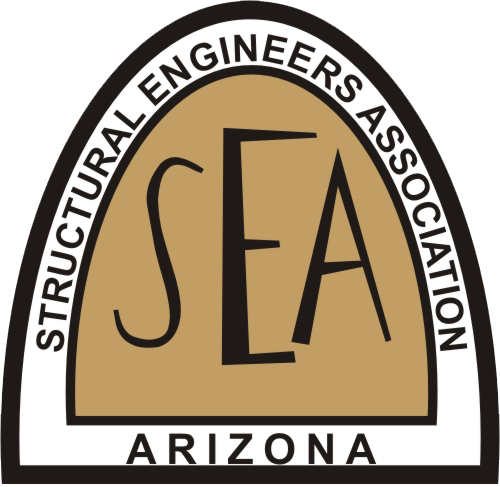CODE COMMITTEE TOPIC: CC09-001
Question: Do masonry fence walls (fence walls 6 feet or less in height) and masonry retaining walls (retaining walls 4 feet or less in height) that do not require a permit as determined by the authority having jurisdiction (AHJ) need to be built per the IBC?
Discussion and Information:
1.) The City of Phoenix requires permits for fences above 3 feet in height, but only checks for zoning issues not structural issues.
2.) It was pointed out that IBC section 105.2, first sentence, clearly states that work exempted from requiring a permit still must be built per the provisions of the code.
3.) There was some other discussion, but the consensus was that exempted items need to be built per the code.
Recommendation to the board: All masonry fence walls and retaining walls, whether exempt from requiring a building permit or not, need to be built per the code.
Date of final recommendation to the Board: 03/10/2009
09/14/2010 Code Committee
There was no additional substantive discussion. George motioned to accept the 03/10/2009 recommendation. Clarence seconded.
Vote: Unanimous yes / No abstentions
Thank you for your consideration regarding this Code Committee Topic. Please contact me if there are any questions regarding this topic. If there are no questions the Code Committee requests the Board review and vote to have the State SEAoA proceed and issue a substantive statement regarding this topic.
Respectfully, State Code Committee,
Paul Scott PE, SE
CODE COMMITTEE TOPIC: CC09-002
Question: IBC section 1808.2.8.5. Does this stated/ required factor of safety of three apply to design situations where uplift forces are being resisted by the dead load weight of the drilled pier (caisson) only?
Discussion and Information:
1.) Tom Thomas had emailed in on this topic and stated, "Restricting uplift resistance only to the weight of the caisson is very conservative."
2.) Most engineers try to use skin friction or a "cone shape" soil mass to resist uplift and add that to the weight of the caisson.
3.) This code provision is probably not meant for situations where only the dead load of the caisson is used to resist uplift forces. Instead, the approach should be to use .6DL to resist the net uplift force.
Recommendation to the Board: It is not necessary to have a factor of safety of 3.0 when 06DL is used and only the weight of the concrete in the hole is used to resist uplift forces.
Date of final recommendation to the Board: 06/09/2009
09/14/2010 Code Committee:
There was no additional substantive discussion. Clarence motioned to accept the 03/10/2009 recommendation. Bill seconded.
Vote: Unanimous yes / No abstentions
Thank you for your consideration regarding this Code Committee Topic. Please contact me if there are any questions regarding this topic. If there are no questions the Code Committee requests the Board review and vote to have the State SEAoA proceed and issue a substantive statement regarding this topic.
Respectfully, State Code Committee,
Paul Scott PE, SE
CODE COMMITTEE TOPIC: CC09-003
Date first heard by the Code Committee: 01/13/2009
Question: What wind forces need to be placed on canvas roof covers for shade canopies.
Discussion and Information:
1.) It was pointed out that ASCE 7-05 section 6.4.3 states that "approved test data" must be used to use an uplift pressure less than that required for solid, non-permeable, roof material.
2.) There was discussion about using sacrificial fabric roofing that is tethered to one column to ensure the fabric does not become airborne and, therefore, be a potential hazard. There was general agreement that an engineer could use this design approach.
3.) There was discussion about actually measuring the surface area openings for netting type fabrics to determine the % wind pressure.
Recommendation to the Board:
The code committee decided to leave this up to the engineer of record to decide how to approach the design of wind uplift on canvas roofs/ awnings. Tethering can be used, % of air passing through can be used...or solid can be used.
Date of final recommendation to the board: 03/10/2009
9/14/2010 Code Committee
Additional discussion occurred:
1.) Questions should be "What wind forces need to be placed on porous (remove the word canvas) roof covers for shade canopies.
2.) The % opening of the fabric cannot be used all the time because the wind turbulence around the openings in the fabric can make the porous fabric look virtually solid to the wind.
Recommendation to the Board: The code committee decided to leave this up to the engineer of record to decide how to approach the design of wind uplift and wind downward pressures on porous fabric roofs/awnings. Tethering can be used, or solid fabric surface can be used. If % opening of the fabric is used, the engineer must get the technical data from the manufacturer verifying the porous fabric does not behave as a solid during a wind event.
Clarence motioned to send this recommendation to the board, Bruce seconded.
Vote Unanimous yes /No abstentions
Thank you your considerations regarding this Code Committee Topic. Please contact me if there are any questions regarding this topic. If there are no questions the Code Committee requests the Board review and vote to have the SEAoA proceed and issue a substantive statement regarding this topic.
Respectfully, State Code Committee
Paul Scott S.E.
